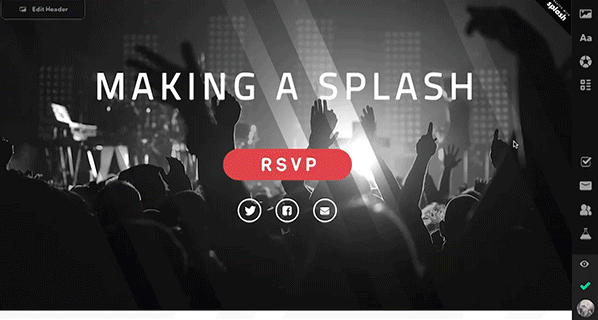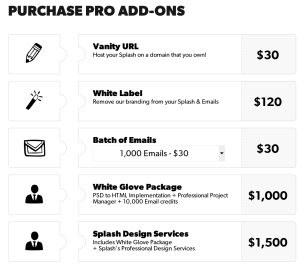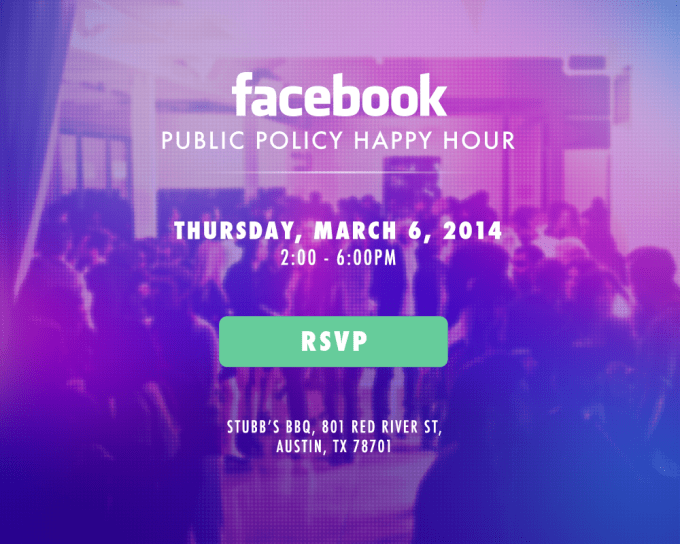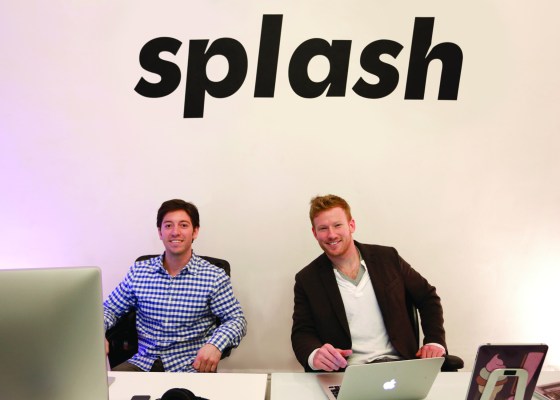People don’t want ads, they want memories. To shift from spammy marketing to providing experiences, companies like Anheuser-Busch, Spotify, NPR, and Wired promoted 80,000 events in 2013 with a little startup called Splash. In co-founder Ben Hindman’s first in-depth interview, he tells me how Splash’s event platform is challenging bland incumbents with its beautifully designed party websites.
A hundred years ago, big events like the World’s Fair were announced with bold, artistic posters. That was the only way to catch someone’s eye on the street. Yet somehow, the Web 2.0 era sucked the life out of event promotion. In the name of consistency, Eventbrite and Facebook caged events in uninspired templates. But if you’re throwing a big event, why would you want it to look like everyone else’s?

“I have been obsessed with the power of the live event since I can remember,” Hindman tells me. He believes the invitation website isn’t just an event’s first impression — it’s where the party starts and ends. It needs to be as unique and vibrant as the experience itself and should host memories of the moment afterwards.
As a founding member of invite-only getaway conference Summit Series and director of events at city guide site Thrillist, Hindman was charged with luring people out of their homes. Meanwhile, he noticed brands were having great success growing and delighting their customer bases through events. That’s when he had the idea for Splash, a way for anyone to build a gorgeous event website, manage attendees, and create a gallery of photos, videos, and other social media from the shindig.
It’s free to set up and host event sites on Splash. Users get full control of the background, fonts and color schemes, as well as where functional elements like talent bios, RSVP buttons, and ticket sales go. Attendees can check in on mobile when they arrive, and organizers can project a Splash-aggregated real-time stream of photos taken at the event and view analytics afterwards. Paid, à la carte Pro services include more customization, design assistance, email marketing, and on-demand support, because when it’s day-of-show, promoters need immediate help to save their sanity if something goes wrong. Splash’s “Hall Of Fame” of great event pages shows off what it can do.

In the two years since, Splash has stayed quiet refining its product despite explosive growth. The 80,000 event sites it hosted in 2013 drew 1.6 million attendees, and Splash processed $3.5 million in ticket sales. Through the 2% + $0.99 it charges for-profit companies to sell tickets processed through Braintree, it brought in $100,000 in revenue. That ticket fee is just a little lower than Eventbrite’s.
 In 2014, Splash is expecting 5X that revenue thanks to big enterprise deals with frequent event throwers like Anheuser-Busch, which is planning thousands of events on Splash this year for its products like Budweiser beer. Facebook is even using Splash instead of its own events platform to promote parties at SXSW and developer meet-ups around the world. That’s a pretty solid endorsement.
In 2014, Splash is expecting 5X that revenue thanks to big enterprise deals with frequent event throwers like Anheuser-Busch, which is planning thousands of events on Splash this year for its products like Budweiser beer. Facebook is even using Splash instead of its own events platform to promote parties at SXSW and developer meet-ups around the world. That’s a pretty solid endorsement.
On the back of this momentum, the 12-person startup just closed a $1.5 million seed round from Maveron, Lerer Ventures, David Tisch’s BoxGroup, PROfounders, Red Sea Ventures, Great Oaks, and angels like Scott Belsky of Behance, former Facebook sales director Kevin Colleran, Hot Topic’s Eben Pagan, and Thrillist’s Jody Rones. That builds on the $240,000 convertible note it raised from BoxGroup in 2013.
Splash still has a long way to go before becoming a household name like Eventbrite, which is rocketing towards an IPO. It’s also competing in some ways with MailChimp on email marketing and NationBuilder for political events. But while Splash does sell tickets, its focus is more on free-to-attend branded events. That’s where the real opportunity is — companies with big budgets trying to make a big…splash. With great design, even something as low-key as a “public policy happy hour” can seem exciting.

“For a brand to have the full attention of a room full of consumers presents exponentially more value per person than any form of media buy,” Hindman explains. “Because of this, the stakes of an event could not be higher.” Here, ROI isn’t measured in ad clicks and immediate sales, but the ability to turn anyone into a loyal advocate for a brand.
Over the past decade we’ve digitized many of the possessions we used to hold dear. When anyone can copy an MP3 or stream a song, owning an album doesn’t mean the same thing it used to. Meanwhile, we’ve developed devices and social networks to capture and share moments. It all contributes to the shift from a material culture to an experiential one that Splash is riding.
Hindman gushes, “Truly — there is nothing more powerful than the memories that are created on special occasions and celebrations. When we come together and remove our inhibitions, we connect on a higher level.” Because at the end, no one sits on their death bed thinking “All the things I could have owned!” It’s “All the things I could have done!”
